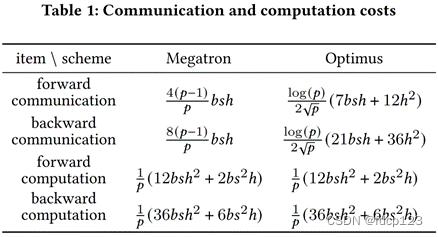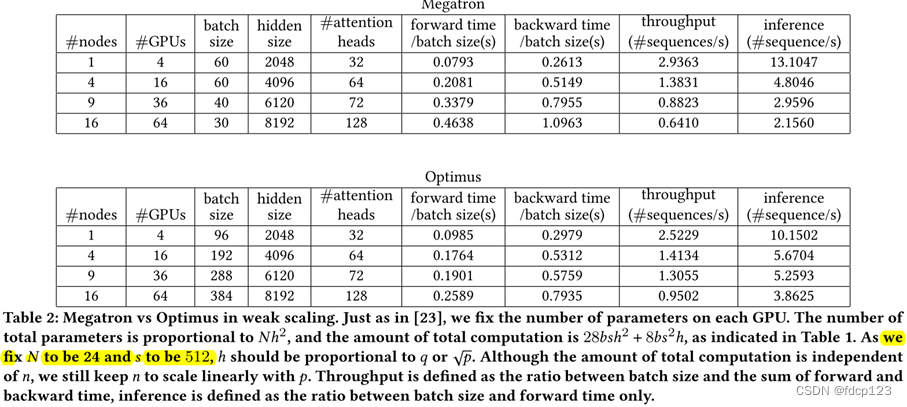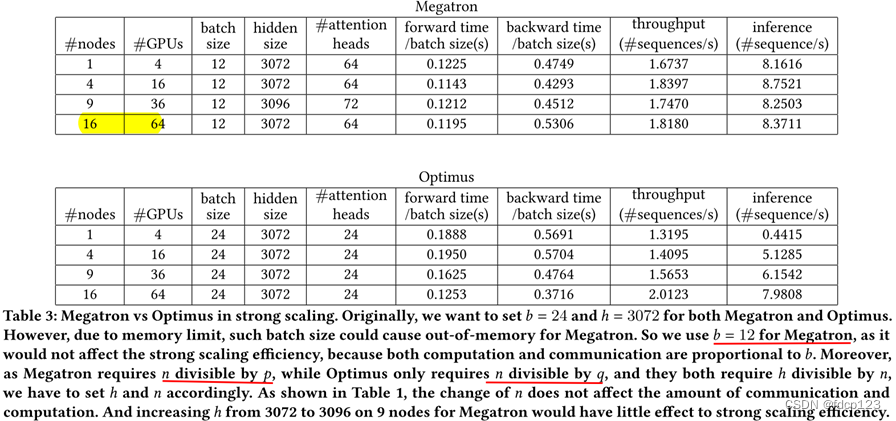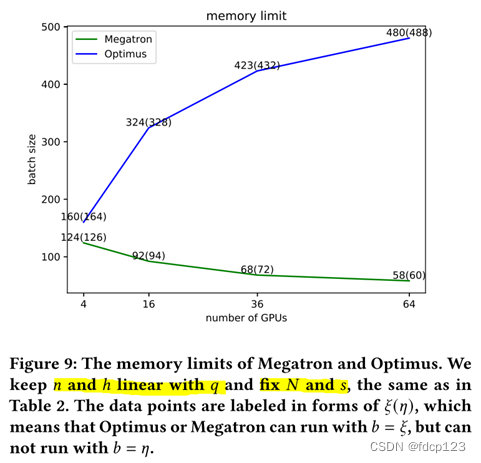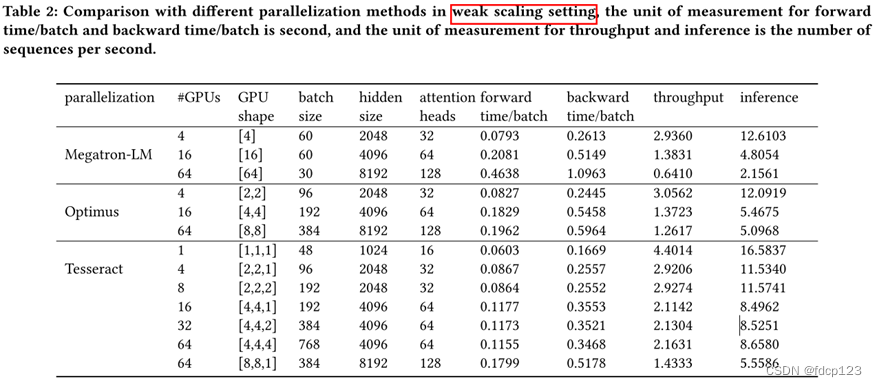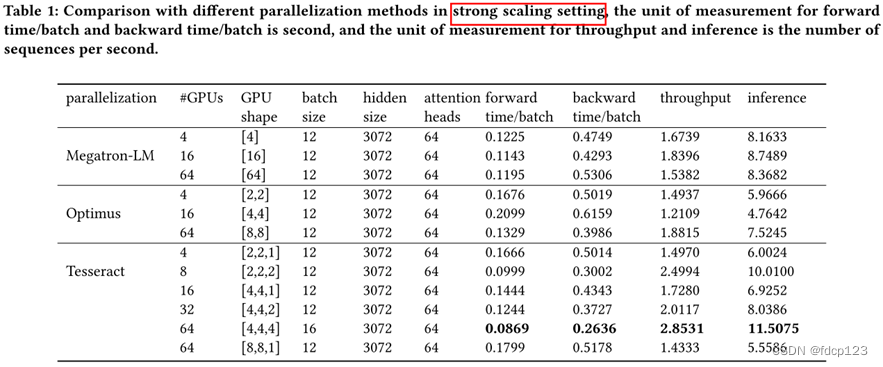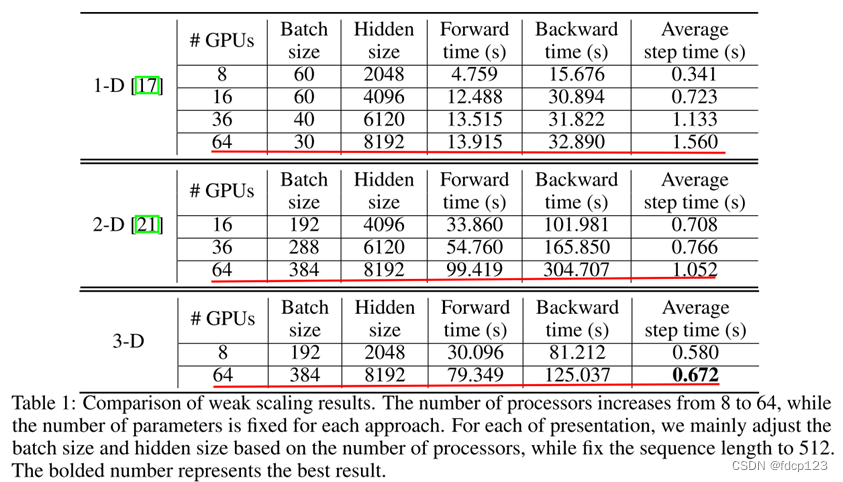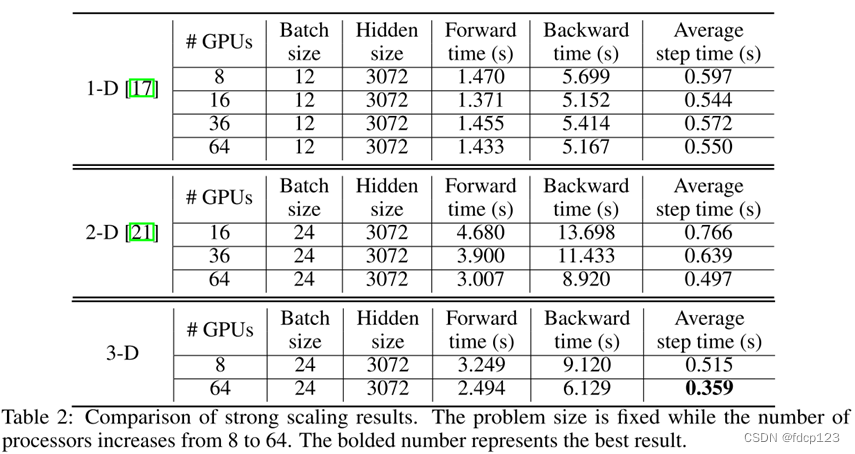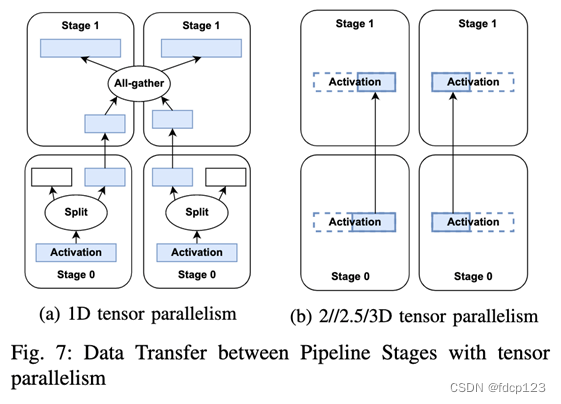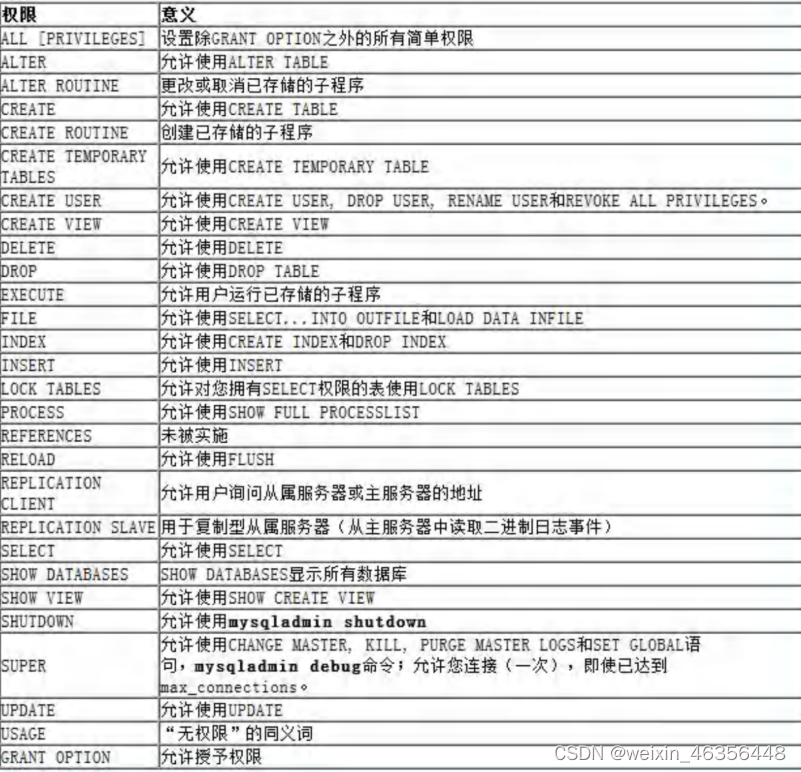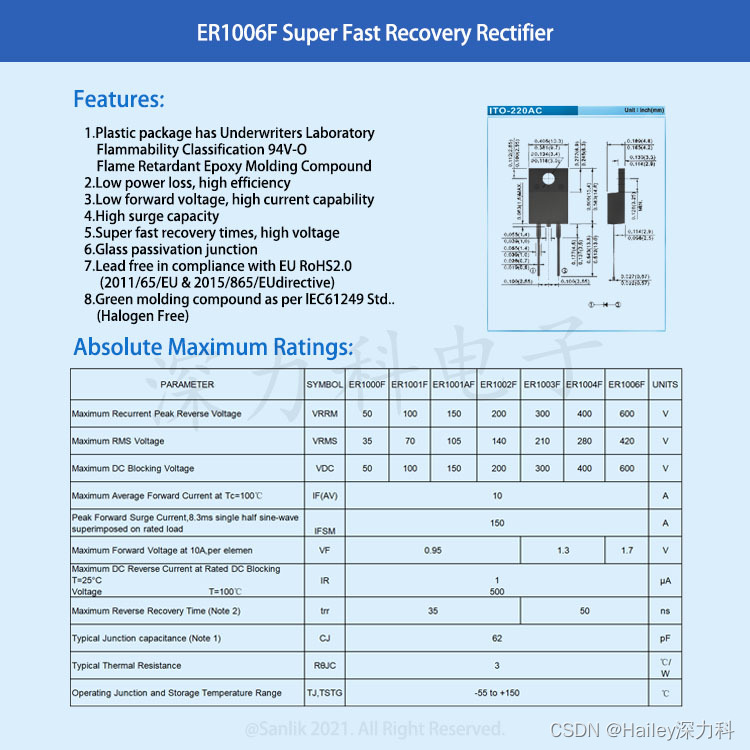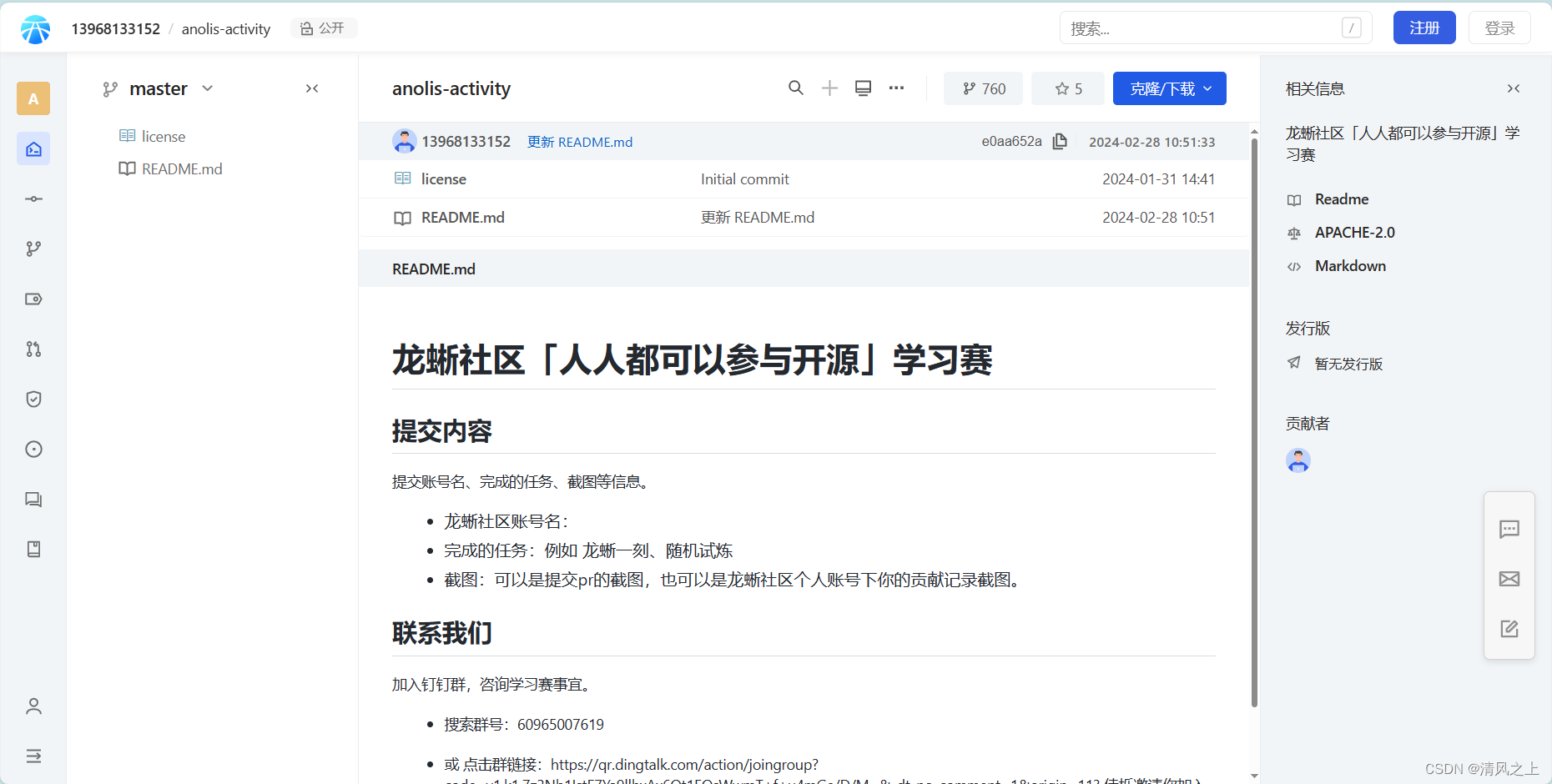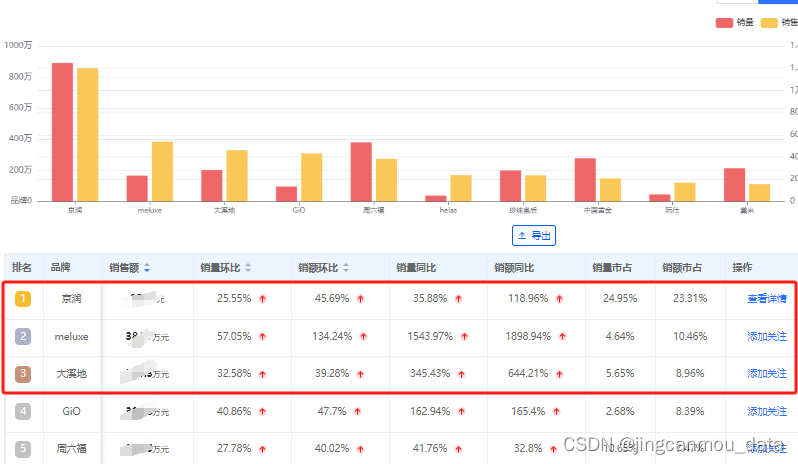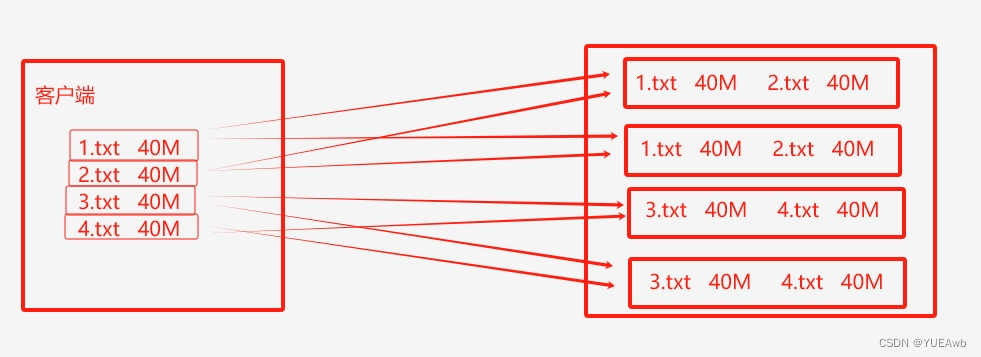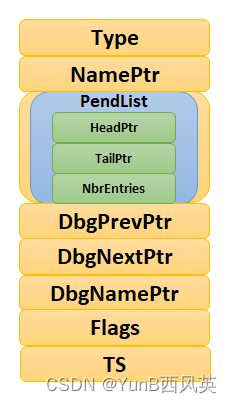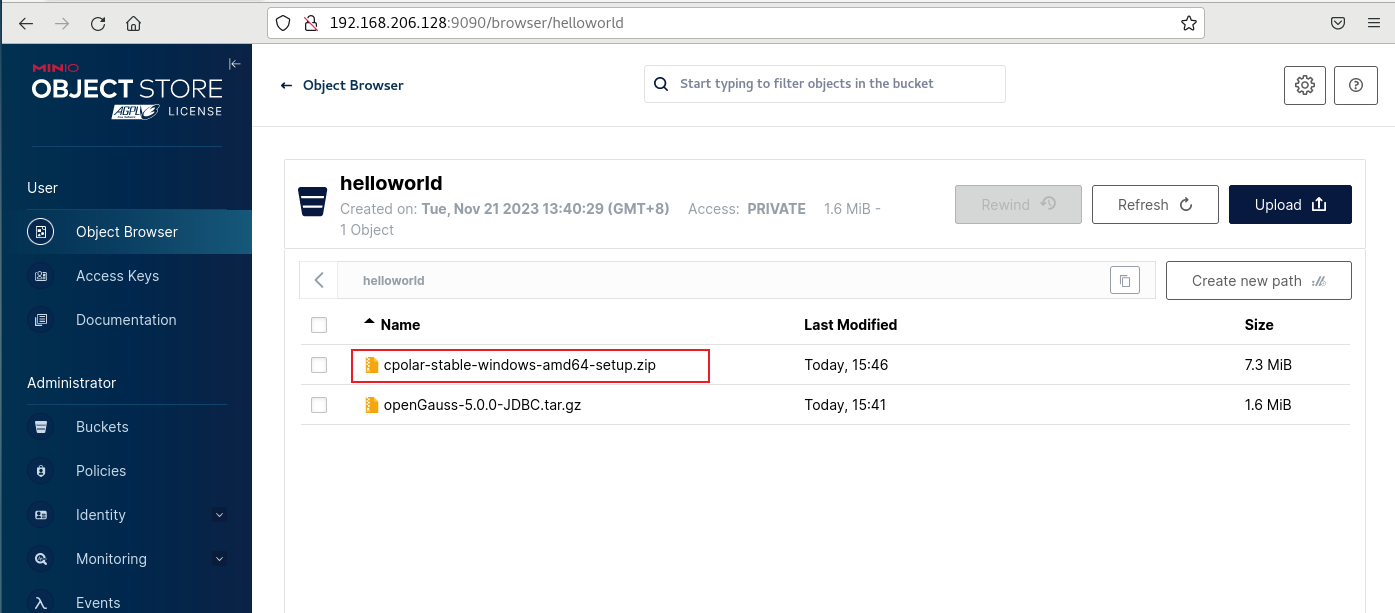Colossal AI 多维TP
1. 2D TP
1.1. SUMMA 2D 矩阵乘法
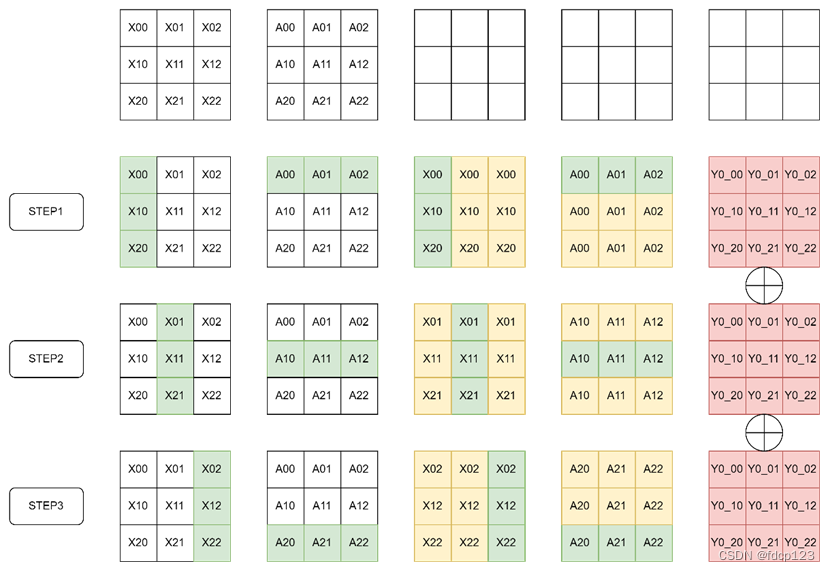
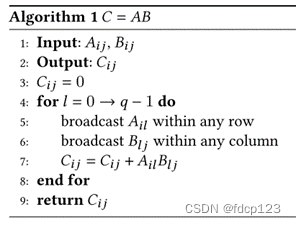
数值示例:

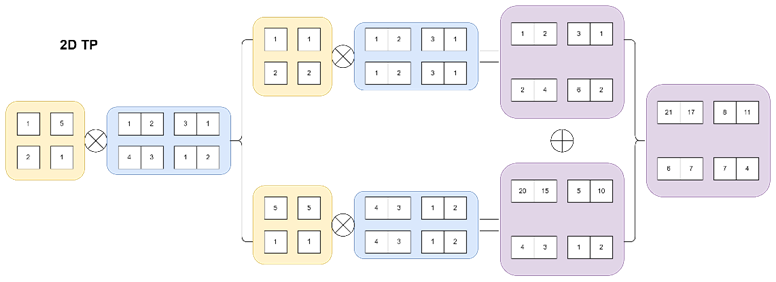
条件:每个矩阵都可以均匀的拆分为 p=q^2块(行q块,列q块·)
1.2. Transformers上的应用
b: batch size s: seq_len h: hidden size p: GPUs q: p=q^2
输入shape为{b, s, h}{bs, h}{bs/q, h/q},实际使用时将b和h进行拆分,如下图所示。

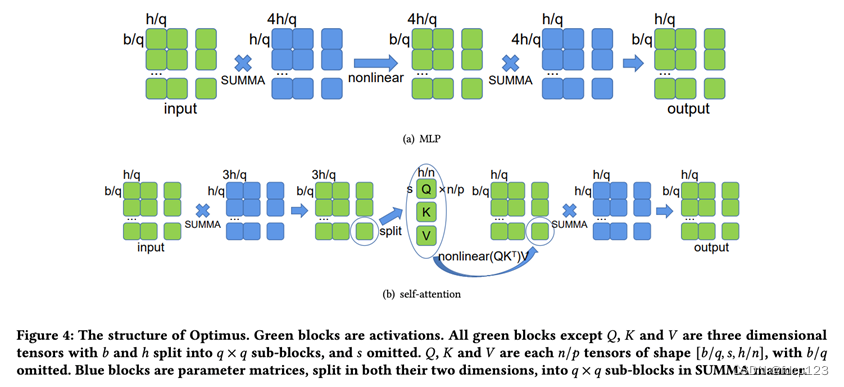
通信量和计算量对比(包含activation checkpointing)
性能对比
1)Weak scaling concerns the speedup for a scaled problem size with respect to the number of processors
2)Strong scaling concerns the speedup for a fixed problem size with respect to the number of processes
3)memory performance
注:测试环境
4 NVIDIA Quadro RTX 5000 GPUs on each node, and nodes are inter-connected with Mellanox InfiniBand
2. 2.5D TP
2.1. Tesseract 矩阵乘法:将一个矩阵乘法拆分为多个SUMMA 2D矩阵乘法

数值示例

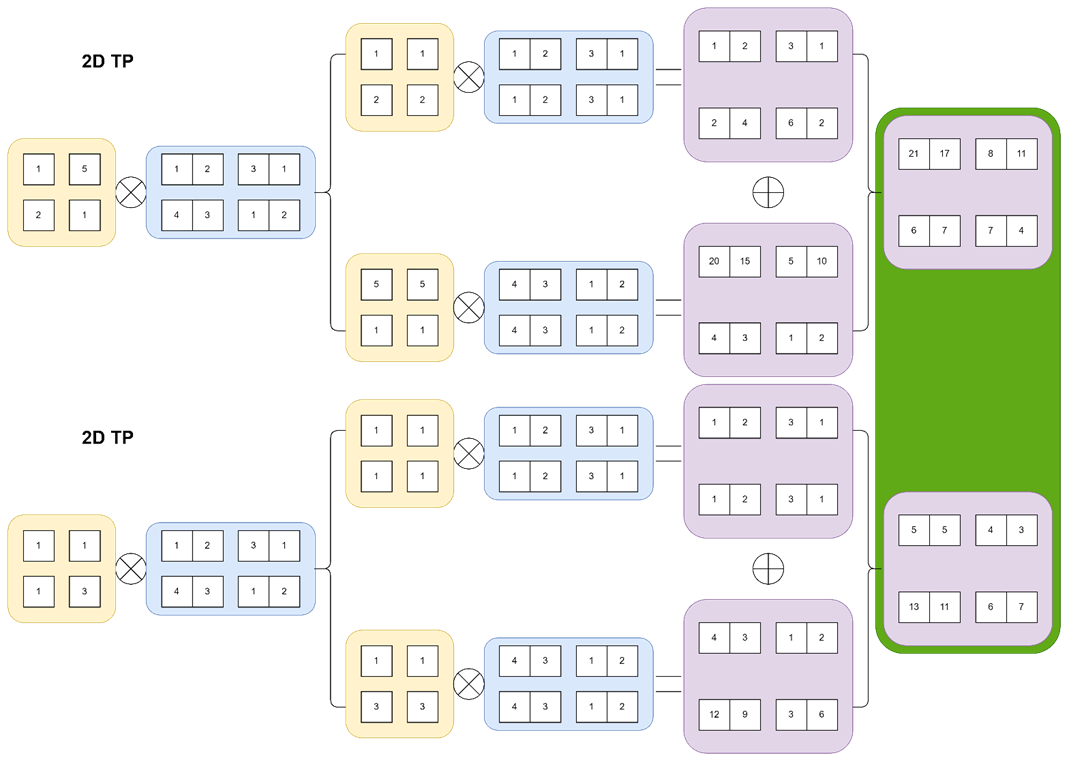
2.2. Transformers上的应用
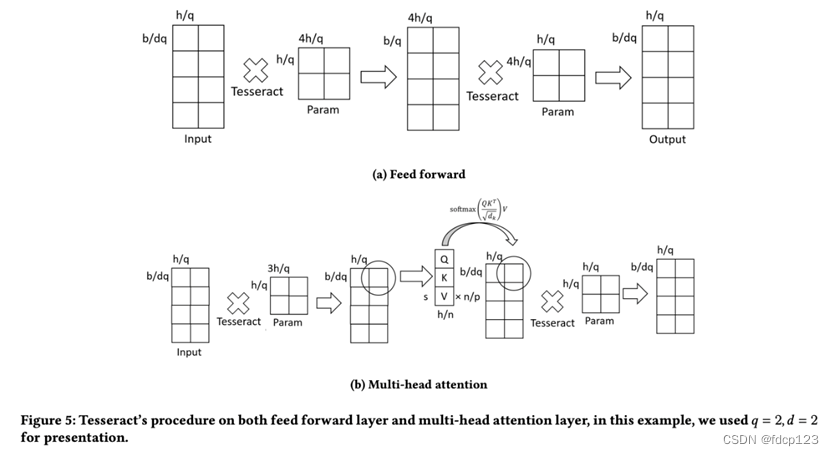
性能对比:
1) Weak scaling
2) Strong scaling
注:4 NVIDIA A-100 GPUs per node
2.3. 对比和结论(C=AB)

1) 当d=1时,即为SUMMA 2D 的矩阵乘法。
2) 2D和2.5D不仅拆分了B,还拆分了A。
3) 2.5D中,p=dq^2。
4) 2.5D相对于2D而言,通过把B复制了d份来减少通信次数。
5) P=dq^2固定的情况下,不同的{d,q,q}配置性能相差甚远。
3. 3D TP
3.1. 算法



3.2. Transformers上的应用
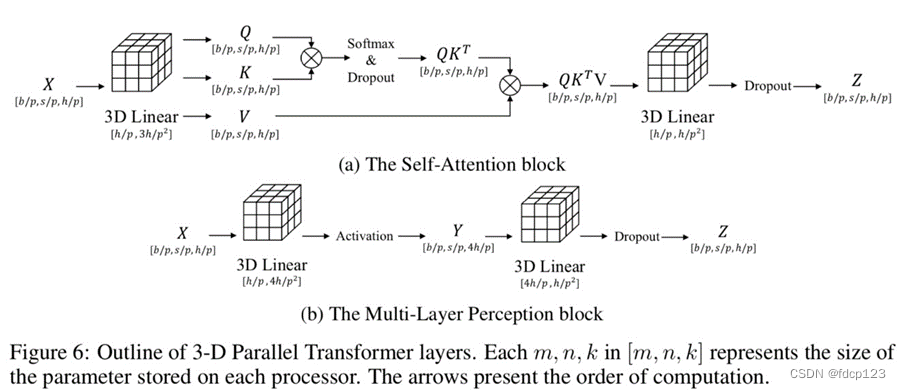
1) 输入在 {b,s,h} 三个维度上都进行拆分。
2) 参数在in_size上按p拆分,out_size按p^2拆分。
3) XA后都有一个reduce-scatter操作。
性能对比:
1) Weak scaling
2)Strong scaling
